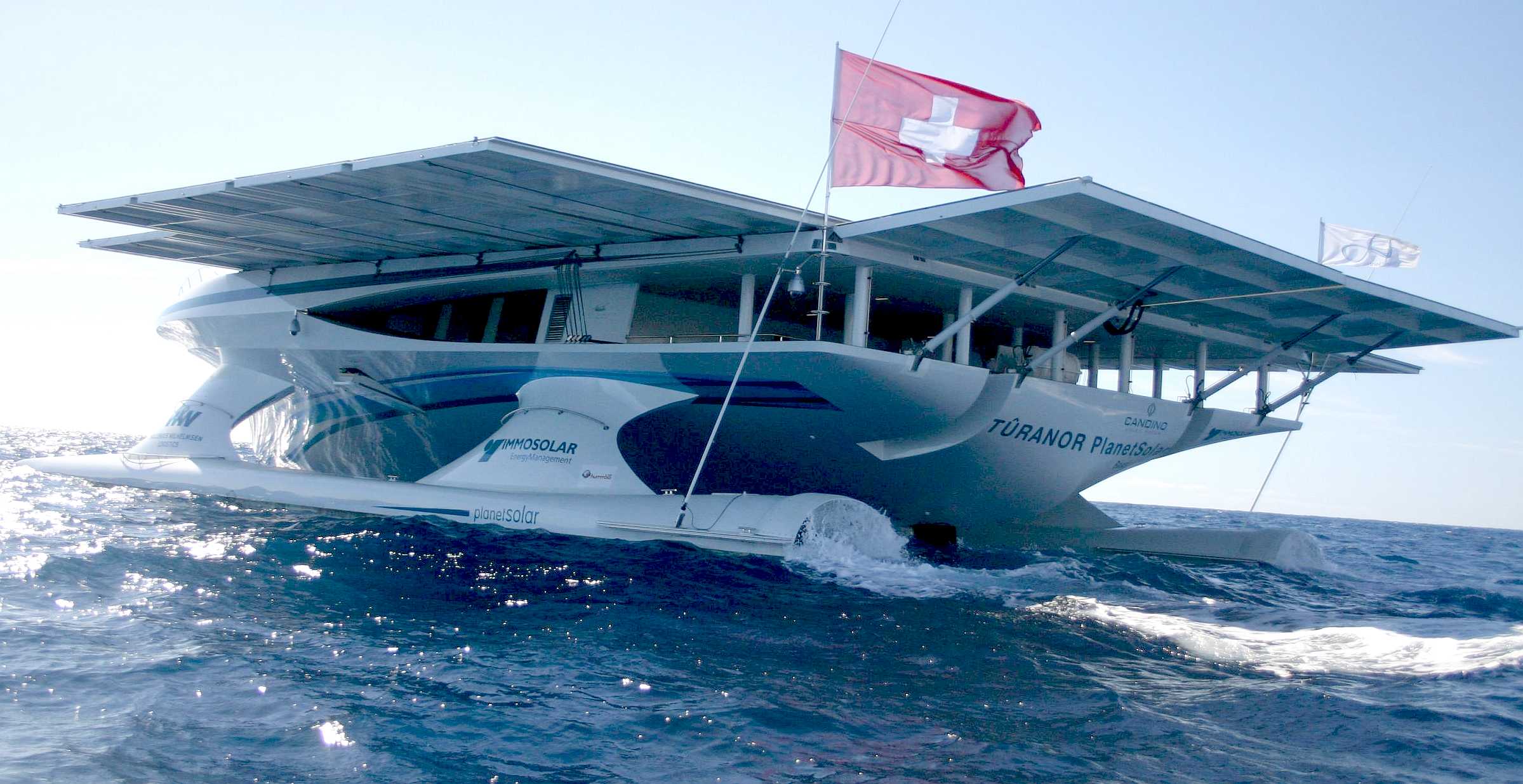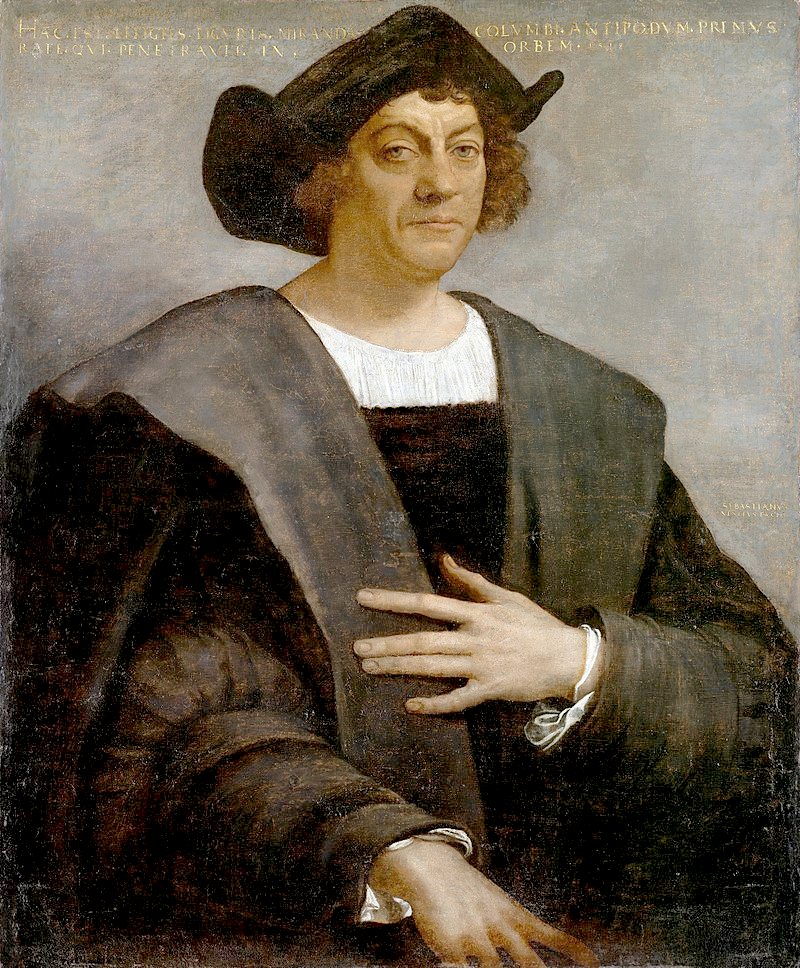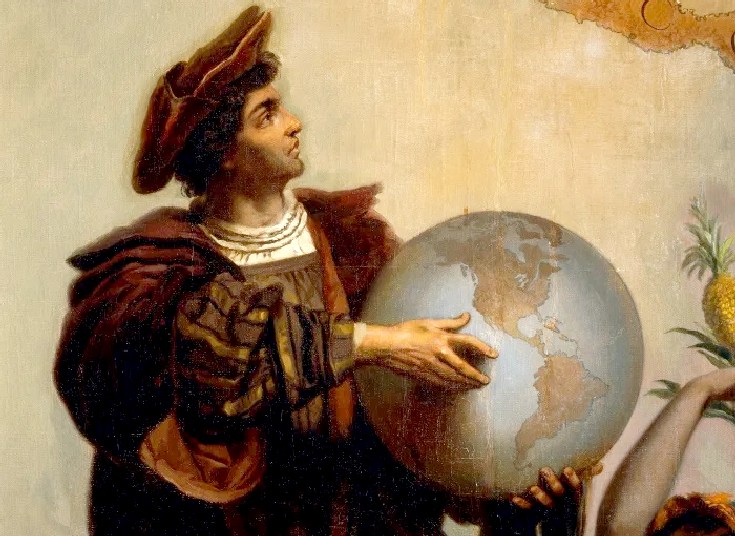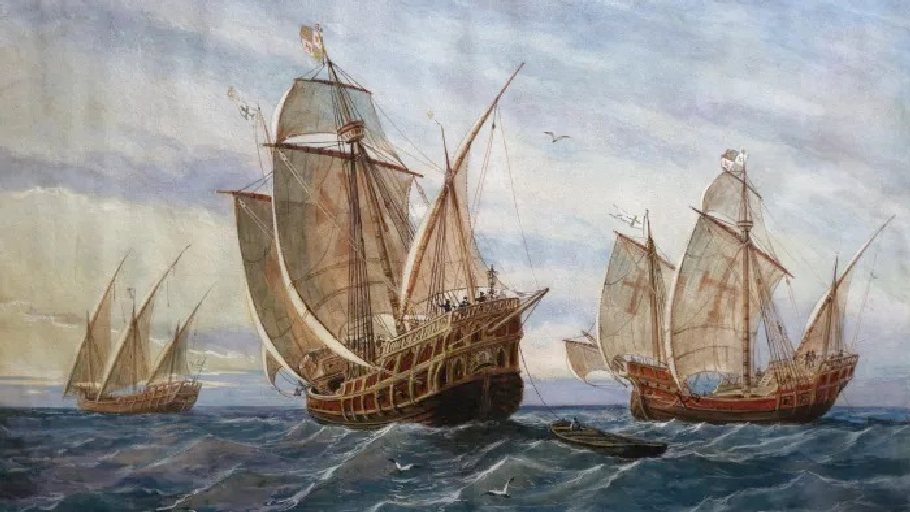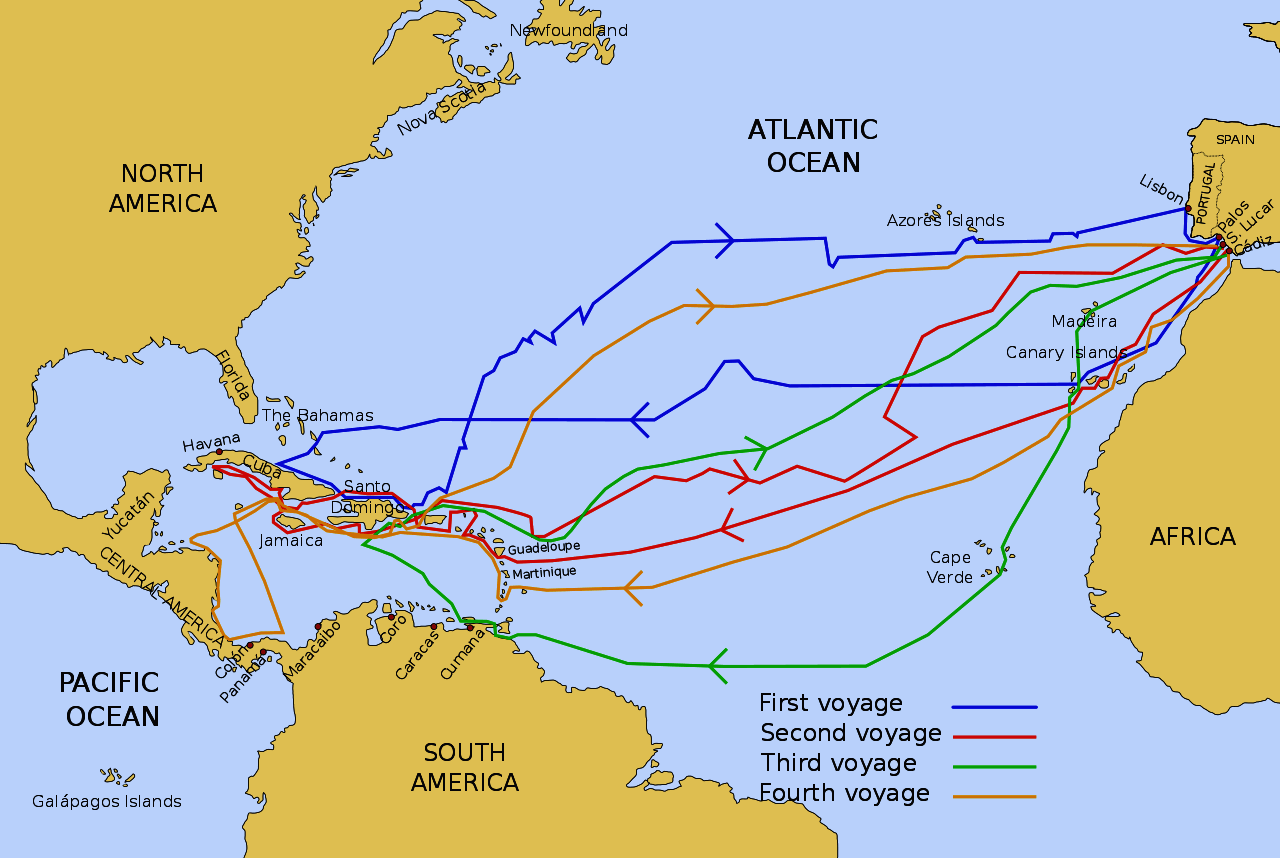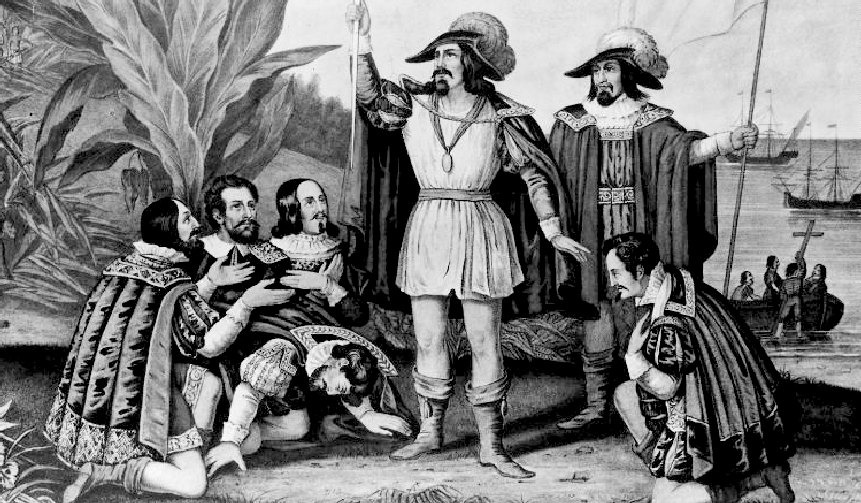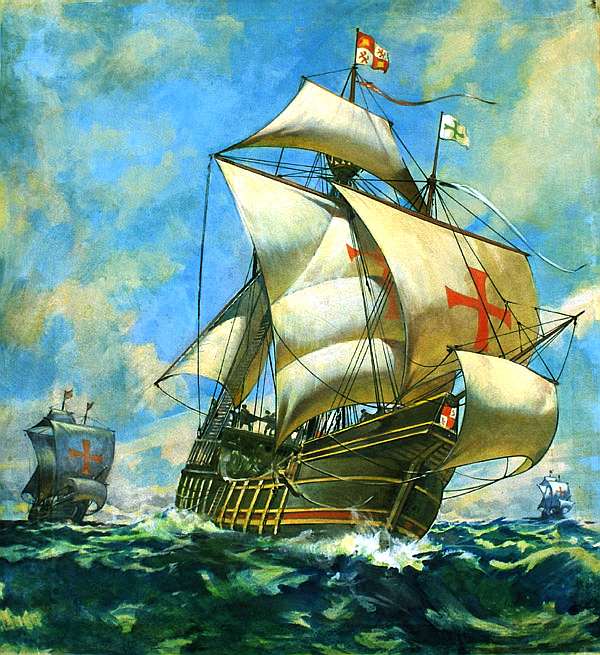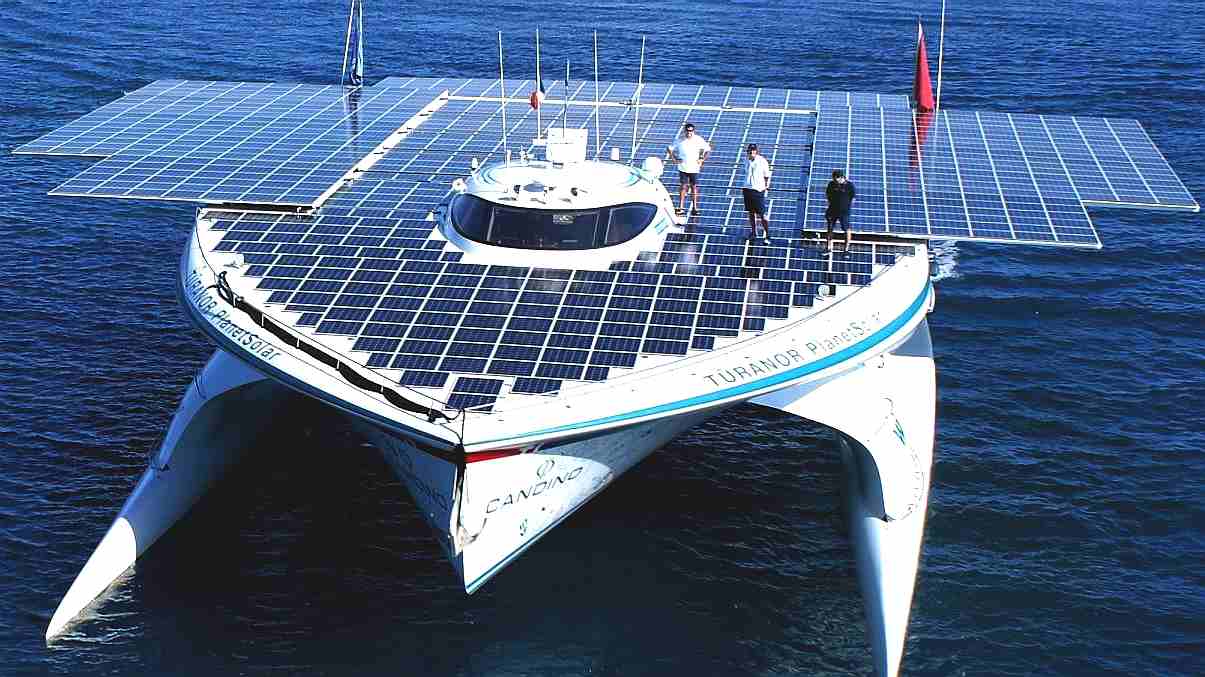|
CHRISTOPHER COLUMBUS
Please use our A-Z INDEX to navigate this site or return HOME
|
|
PlanetSolar heading out into uncharted technical waters. The theory was in place, but nobody knew if this solar powered boat could make it. But they did! The solar panel area on this ship was increased with solar panels on rollers, pulled out by the crew using winches. The Elizabeth Swann uses robotics and hydraulics to move solar wings that automatically track the sun, and fold away in storm conditions. This ship did not have sails or a wind turbine to take advantage of the trade winds.
Columbus went to sea at a young age and traveled widely, as far north as the British Isles and as far south as what is now Ghana. He married Portuguese noblewoman Filipa Moniz Perestrelo and was based in Lisbon for several years, but later took a Castilian mistress; he had one son with each woman.
Though largely self-educated, Columbus was widely read in geography, astronomy, and history. He formulated a plan to seek a western sea passage to the East Indies, hoping to profit from the lucrative spice trade. Following Columbus's persistent lobbying to multiple kingdoms, Catholic monarchs Queen Isabella I and King Ferdinand II agreed to sponsor a journey west. Columbus left Castile in August 1492 with three ships, and made landfall in the Americas on 12 October 1492.
Christopher Columbus (1451 and 1506) tried to investigate water movement in the sea. During his exploration missions, he used three vessels to sail across various areas, namely the Canary Islands to the Bahamas covering 5400 miles, a voyage of around 36 days.
On August 3, 1492, Christopher Columbus and his crew set sail from the port of Palos in southern Spain on three vessels: la Santa Clara (Niña), la Pinta and la Santa Gallega (Santa Maria). Two of the ships, the Niña and Pinta, were caravels, tiny by today’s standards — only 50 to 70 feet from bow to stern - prized for their speed and maneuverability. The Santa Maria, Columbus’s flagship, was a larger, heavier cargo ship.
The earlier Portuguese caravels, known as the caravela latina, were rigged with lateen (triangular) sails that hung at 45-degree angle to the deck. Lateen sails are almost like wings compared to square rigs. You could point the bow of a caravel with an angle of just 20 degrees off the wind and still get enough lift on the outer edge of the sail to propel forward.
The lateen-rigged caravels were critical in the Portuguese voyages to sub-Saharan African, where strong coastal winds blow north to south. The versatile caravel could speed south along the coast and easily return to shore against the wind.
During this period, also known as the Age of Sail, other explorers like Vasco Da Gama were unknowingly assisted by these winds to discover new lands and even a route to India. He sailed between July 1497 and May 1498 and was instrumental in humans conquering the sea.
Portuguese and Spanish traders soon realised that the prevailing north easterlies of the mid latitudes could blow a ship across the Atlantic Ocean, and even better, the south easterlies on the other side could blow them back again. It was not luck, it was a natural phenomena that could be exploited.
Other explorers added weight to this research, among them a Norwegian called Thor Heyerdahl, in 1947 with his Kontiki and later Ra expeditions, discovering that trade winds are capable of blowing a balsa raft from South America to the Tuamoto Islands, and a reeds floater from Egypt to America.
THE FAMOUS JINGLE
Some sources attribute the 1492-ocean-blue couplet to a 1919 poem called “The History of the U.S.” by a 17-year-old intellectual prodigy named Winifred Sackville Stoner Jr.
Reportedly a fluent speaker of Esperanto at age 5 (as Winifred Sr., a noted educator, informed the New York Times ), at 13 she published a book called Facts in Jingles, consisting of useful information rendered in easily memorizable light verse
(jingles). "The History of the U.S." is a series of such jingles, only the first of which is about Columbus:
Christopher Columbus was an Italian explorer and navigator who completed four voyages across the Atlantic Ocean, opening the way for European exploration and colonization of the Americas. His expeditions, sponsored by the Catholic Monarchs of Spain, were the first European contact with the Caribbean, Central America, and South America.
THE
WHOLE THING:
|
|
|
Please use our A-Z INDEX to navigate this site
This website is Copyright © 2021 Jameson Hunter Ltd
|
